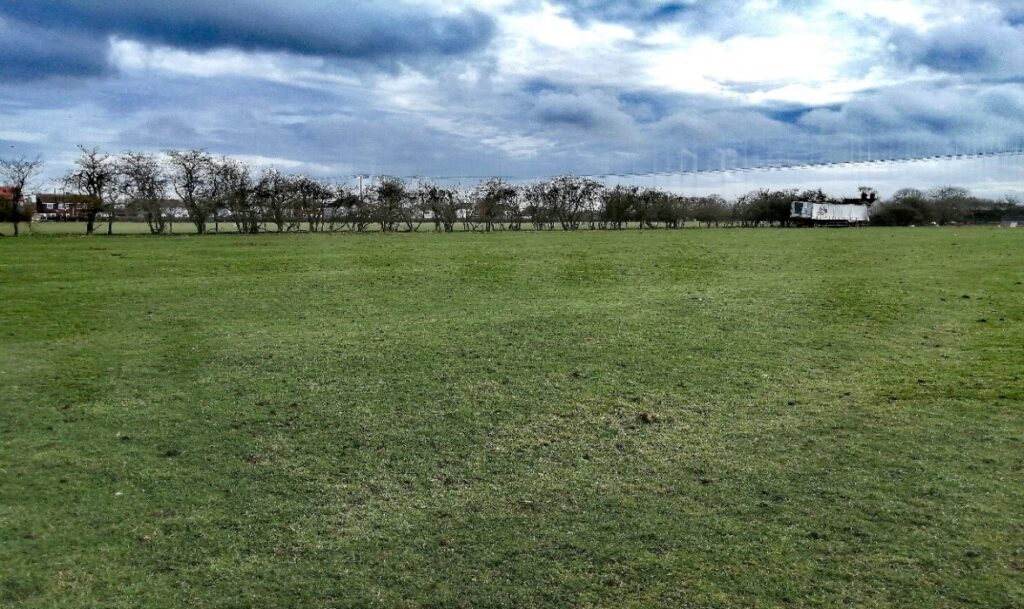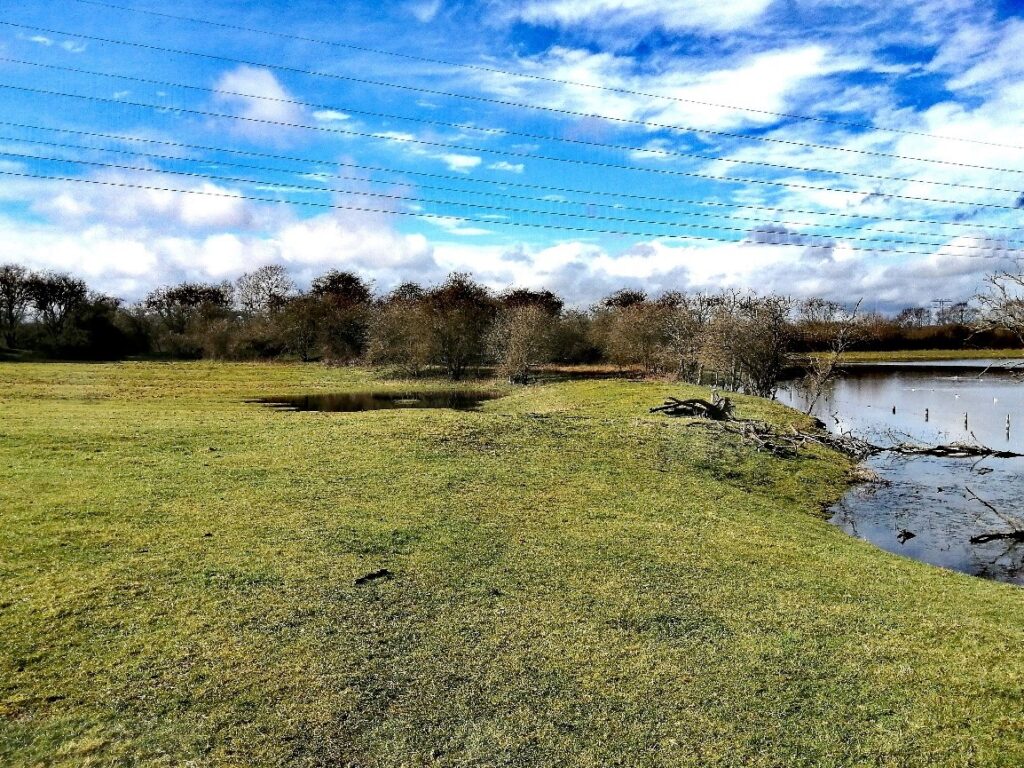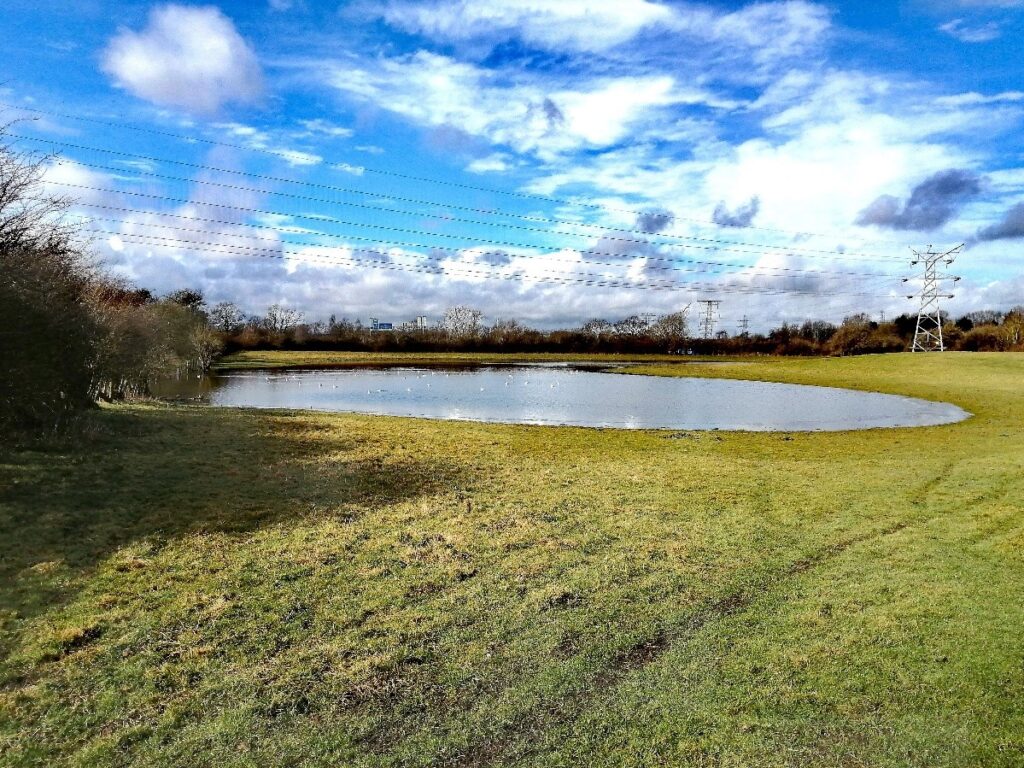Today we start a new occasional series of articles as we follow CovSoc member Peter Hunter as he jogs around the north of the city. Peter writes….
My name is Peter Hunter. I’m an old guy, a member of the Coventry Society who is a bit of a fitness geek. I like to have at least one good jog / run every week while I still can. The problem is that I find running for its own sake tedious. To overcome that I combine my need for a run with my interest in what is going on in Coventry and its surroundings, an interest both in the past and in the future. So, scribbling down thoughts about where I jog makes sense. This month my run took me to the Lentons Lane area in the north of the city where Coventry City Council recently launched outline proposals for a solar farm on farmland that it owns between Lentons Lane and the M6.
I have to say that I’m a keen supporter of renewable energy so I like the idea of a solar farm, but is this the right site and what are the implications of developing the solar farm here? Generally, the proposal has been welcomed by those looking for the development of sustainable power sources, but local residents have expressed concern over the loss of green fields. I decided to take a look at the site and explore it in more detail.

The proposed site comprises three parts. Firstly, and of least interest to me is the eastern field. This lies to the east of Sowe Common. It is not overlooked and has been in arable use for many years. The land is isolated, outside the city boundary and appears to possess few features of interest.
Closer to Lentons Lane Farm are two areas, one to the north of the Oxford Canal and one to the south. For me, the land to the south of the canal is the least contentious of the two. It’s southern boundary is formed by the M6. It has been used for grazing for many years. Some faint signs of ridge and furrow exist, but there are no obvious features of interest. The land has been subject to mining subsidence which I’ll talk about later in relation to the land north of the canal. The subsidence has created a significant pool to the south of the canal and consideration will need to be given to how the pool is handled in the design of the solar farm.
For me, and for local residents, the area to the north of the canal, between the canal and Lentons Lane is the area which is most controversial and most interesting. The part of the site comprises several different fields. The area to the east of the farm isn’t overlooked and doesn’t appear to have significant features of interest, but it is the area to the west of the farm bounded by the canal to the south and Lentons Lane to the north where my attention is focused.
There are three fields here. The one closest to the road and overlooked by housing is used for grazing. The main issue here appears to be that the field is overlooked by housing on Lentons Lane. Quite reasonably, residents would prefer to look out across a scene of sheep and lambs grazing in a pleasant pasture (albeit with the M6 in the background a quarter of a mile away) rather than looking out at ranks of solar panels. The big issue for the developer here is to design the solar farm in a way that looks acceptable from Lentons Lane. Good quality landscaping will be needed. Also there is the issue of security. Solar Farms need to be secure from theft and vandalism. This may well be an issues in this urban fringe location. The secure boundary treatment required along Lentons Lane (and around the rest of the site) will need to be well designed and of good quality – and this won’t be cheap, significantly adding to the cost of the project. These fields are also crossed by well used public footpaths. Reconciling the footpaths with security is another significant concern.
However, let’s talk about the area which is of real interest to me. This comprises a couple of large fields immediately to the north of the canal, west of the farm. The first thing that you notice about these fields is that there is hardly a flat area to be seen. Adjacent to the track past the farm, next to the canal is a superb example of ridge and furrow, taking us back 500 years plus to the days of medieval farming. The area is now used for grazing and has been for a very long time. The ridge and furrow must be one of the best examples in the city and it would be a real archaeological / historic loss if the field were to be levelled for the solar farm. I’m sure the solar farm can accommodate the ridge and furrow, but again it makes the project more costly and potentially hits its viability.

As you move north up this field, the undulations change from the regular ridge and furrow to a much more ad hoc landscape of hummocks, taking us back maybe 300 years to “Wykin Old Colliery” which was located in this field. It isn’t clear whether the features on the ground are waste from mining operations or whether there are the remains of buildings beneath the grassy undulations. Dates for this mine are difficult to come by. It may well be the “Old Colliery” was working in the second part of the eighteen century and into the early part of the 19th. Numerous “old shafts” are shown on maps of the area, including in the field in question. The Warwickshire coal seams are very close to the surface in this Hawkesbury area and mining had been taking place since the 16th century. In the couple of centuries before the canals and railways were established, coal had to be moved by horse and cart, limiting the scale of production and the distance coal could be carried.

It may well be that mining was taking place here before the Oxford Canal arrived in the late 1770’s, but the arrival of the canal would have provided an opportunity to scale up production significantly. It is an area I know well and looking at the landform alongside the canal, I’ve often wondered if there was a very early canal wharf adjacent to the site of the old colliery, although I’ve seen nothing to confirm this. Wykin Old Colliery probably closed in the first part of the 19th century when the new Wyken Main Pit opened only a few hundred yards to the south on the high ground above what is now Wyken Slough. The new colliery was serviced by a branch of the canal which still exists (although altered to accommodate the M6) and later by a branch railway coming from Hawkesbury Junction. This colliery in its turn closed in 1881 as mining continued to follow the coal seams south, all the time becoming deeper.
It would be unfortunate to lose all traces of the old mine, at least without some basic archaeological work taking place to provide more detail of what went on here all those years ago. The area seems to have been little disturbed over the last couple of hundred years so interesting remains may well exist.
Another obvious link to mining in this field is subsidence and the creation of a significant water area. This subsidence is relatively recent. I remember the fields before the subsidence “flashes” appeared. Then I remember when the “flashes” came and went depending on rainfall and season. But now the pools are well established and although their size changes depending on rainfall, they have become permanent, significant water features. I have no answer as to why this subsidence is only happening now in an area where close to the surface mining took place so long ago, in contrast to the flooding that created Wyken Slough only a few hundred yards away back in the mid 19th century. It may have something to do with the area being mined again for coal a hundred years or so later, at far greater depth, working lower coal seams, as workings from Coventry Colliery at Keresley reached this area in the 20th century. I believe that’s the case although I haven’t checked my recollection of this.

The new pools present a problem for the developers of the solar farm. They take up a significant amount of land and have been getting larger over time. How do you design your solar farm around these areas? The pools also offer an interesting opportunity. They are significant water areas which are already attracting birdlife, although there is virtually no peripheral vegetation at the moment. The largest of the pools is immediately adjacent to the Hawkesbury Village Green – a great example of a community led initiative to create a small, but attractive community park. Maybe there is scope to link the two, linking the park with the new pool – they are literally yards apart, creating a new mini country park. Both areas of land are owned by the City Council so it could be possible if the desire was there. Maybe Warwickshire Wildlife Trust would be interested in getting involved with the project. The site is only a few hundred yards from their Wyken Slough reserve (although separated by the M6).
This isn’t a simple case of do you support the solar farm or not. It’s far more complex than that, with numerous factors coming into play. I’m sure a well-designed solar farm could be created here, but how viable is this? Is this the right location for a solar farm? I applaud the City Council for seeking to drive forward the idea of a solar farm. However they need to take into account numerous issues in addition to the technical issues of developing a solar farm:
- Landscaping and protecting the view from Lentons Lane
- Site security in this urban fringe location
- Footpath diversions
- Archaeology and history
- Subsidence and the water features on the site
Quite a few challenges then to be resolved before we see a solar farm in the fields of Hawkesbury.
